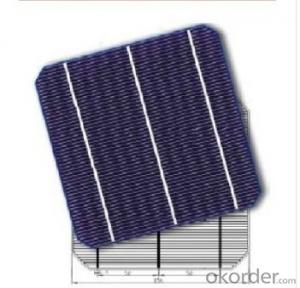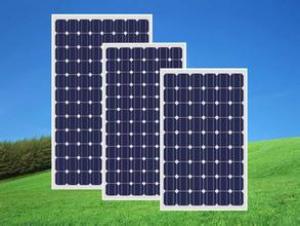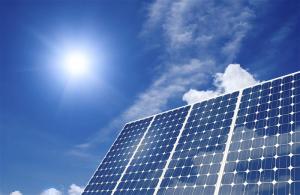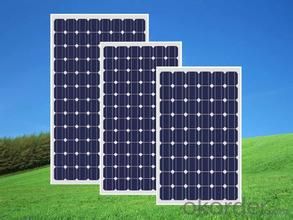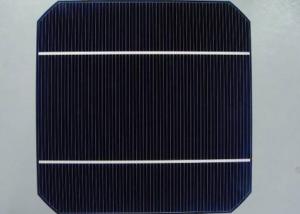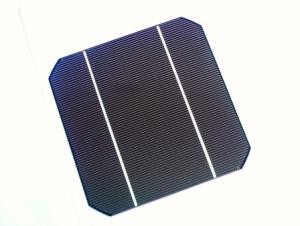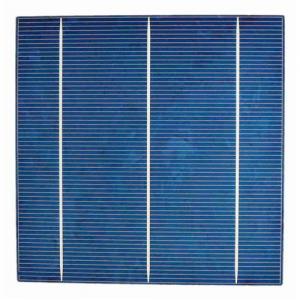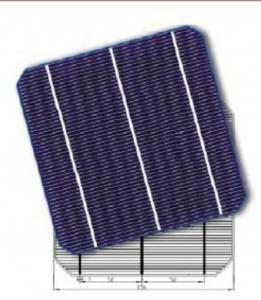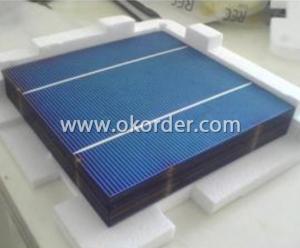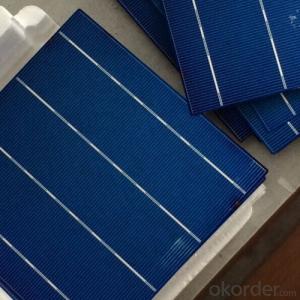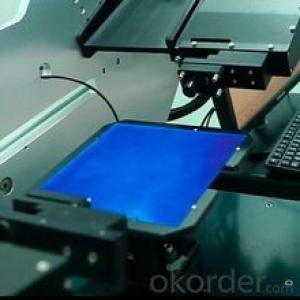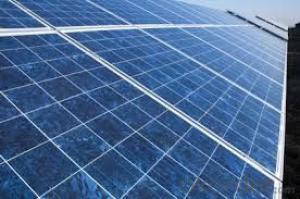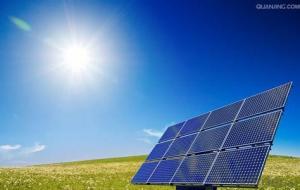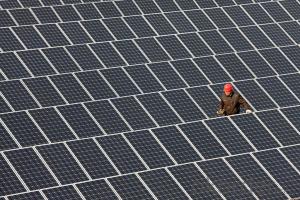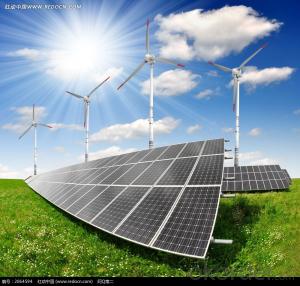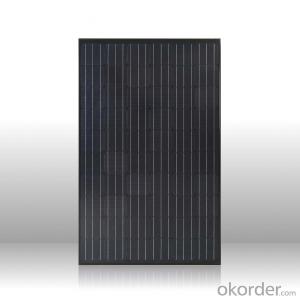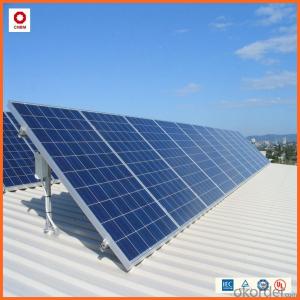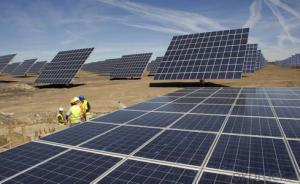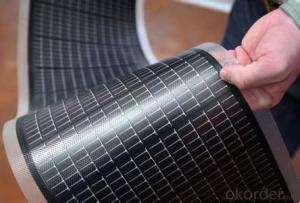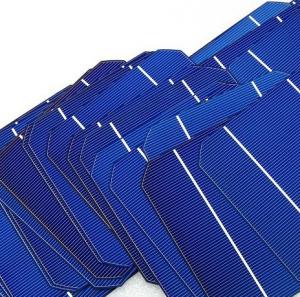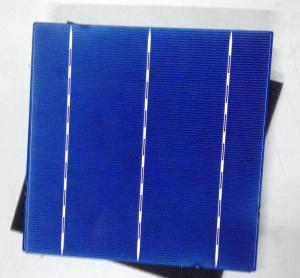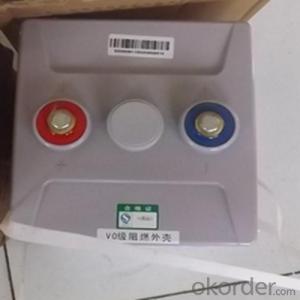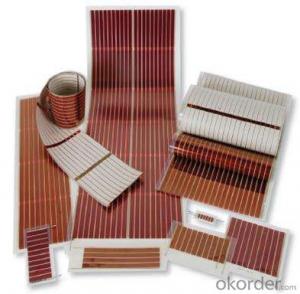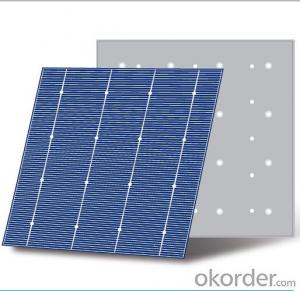250W High Temperature Solar Cells Mono Solar Panel with High Efficient Output and 25 Years Quality Assurance
- Loading Port:
- Shanghai
- Payment Terms:
- TT or LC
- Min Order Qty:
- 1 PCS
- Supply Capability:
- 100000 PCS/month
OKorder Service Pledge
OKorder Financial Service
You Might Also Like
Mono Solar Cell 156mm
Product Description
Most solar modules are currently produced from crystalline silicon (c-Si) solar cells made of multicrystalline andmonocrystalline silicon. In 2013, crystalline silicon accounted for more than 90 percent of worldwide PV production, while the rest of the overall market is made up as they offer the highest ratio of generated power per kilogram lifted into space. MJ-cells are compound semiconductors and made of gallium arsenide (GaAs) and other semiconductor materials. Another emerging PV technology using MJ-cells is concentrator photovoltaics (CPV).
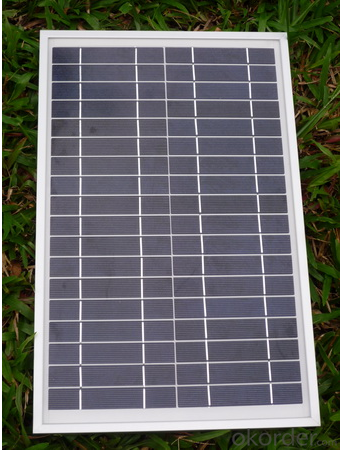
Feature
High quality cell
Level A cell
Dimensione:125*125mm Diagonal:150mm / 165mm
Qualified certification: TUV,CE certification.Warranty: five years for whole unit
Application Of Mono Solar Cell 156mm
Monocrystalline solar cells are currently the fastest developing a solar cell, its structure and production process has been finalized, the products have been widely used for space and ground. Such solar cells with high purity silicon rods as raw materials. Silicon rods, material performance indicators in order to reduce production costs, and now solar terrestrial applications such as the use of solar grade somewhat relaxed. Some semiconductor devices can also be used for processing materials and discard the head and tail of silicon materials, solar cells after re-drawn into a dedicated silicon rods.
Physical characteristic
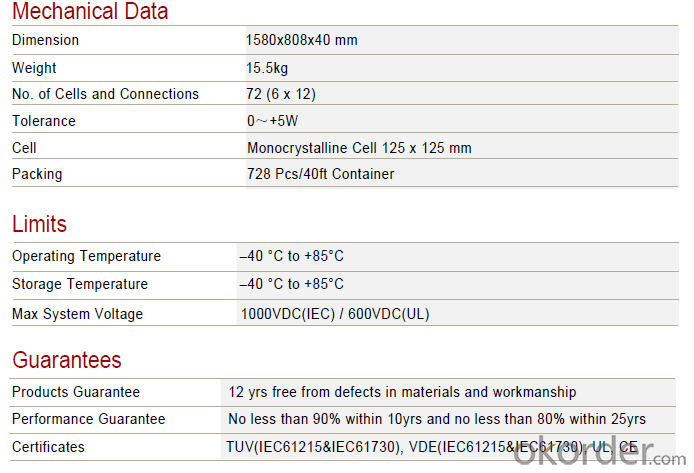
- Q: What are thin-film solar cells?
- Thin-film solar cells are a type of photovoltaic technology that use thin layers of semiconductor materials to convert sunlight into electricity. These cells are lightweight, flexible, and can be manufactured using low-cost materials and techniques. They are commonly used in portable electronics, building-integrated photovoltaics, and other applications where traditional solar panels may not be suitable.
- Q: Can solar cells be used in boats or marine applications?
- Yes, solar cells can definitely be used in boats or marine applications. They provide a sustainable and renewable source of energy to power various systems onboard, such as navigation equipment, lighting, battery charging, and even propulsion systems. Solar panels can be installed on the deck or roof of a boat, where they can harness the sun's energy to generate electricity and reduce reliance on fossil fuels.
- Q: Can solar cells be used in satellite or space exploration missions?
- Yes, solar cells can be and have been used in satellite or space exploration missions. Solar cells convert sunlight directly into electricity, making them a reliable and efficient source of power for satellites and space probes. They are lightweight, durable, and ideal for harnessing energy in space where traditional power sources are not feasible.
- Q: What is the impact of solar cells on reducing greenhouse gas emissions?
- Solar cells have a significant impact on reducing greenhouse gas emissions as they generate clean and renewable energy from sunlight, without emitting any greenhouse gases. By replacing fossil fuel-based electricity generation, solar cells help reduce the carbon dioxide and other harmful emissions that contribute to climate change. This transition towards solar energy plays a crucial role in mitigating global warming and creating a more sustainable future.
- Q: What is the lifespan of a solar cell?
- The lifespan of a solar cell can vary depending on various factors, but on average, solar cells have a lifespan of around 25 to 30 years. However, with proper maintenance and care, solar cells can even last longer, sometimes up to 40 years or more.
- Q: Can solar cells be used in desert environments?
- Yes, solar cells can be used in desert environments. In fact, desert environments are ideal for solar power generation due to abundant sunlight. The high solar irradiance levels in deserts provide excellent conditions for solar panels to generate electricity efficiently. Additionally, solar panels can withstand the extreme heat and sandstorms typically found in desert regions.
- Q: How does the solar cell work properly?
- The most important step is the photons in sunlight hit the solar panel and can be absorbed by semiconducting materials.
- Q: Can solar cells be used in indoor applications?
- Yes, solar cells can be used in indoor applications. While solar cells primarily generate electricity from sunlight, they can also convert artificial light sources, such as fluorescent or LED lighting, into electricity. This makes them suitable for powering various indoor devices and applications, including calculators, wireless sensors, and even indoor lighting systems.
- Q: Can solar cells be used in power plants?
- Yes, solar cells can be used in power plants. Solar power plants, also known as solar farms or solar parks, utilize large arrays of solar panels that contain solar cells to convert sunlight into electricity. These power plants can generate a significant amount of renewable energy and contribute to reducing greenhouse gas emissions.
- Q: Can solar cells be used in concert venues?
- Yes, solar cells can be used in concert venues. They can be installed on the roofs or surrounding areas of the venue to capture solar energy and convert it into electricity. This renewable energy source can help power various systems within the venue, such as lighting, sound equipment, and other electrical needs, reducing the reliance on traditional energy sources and lowering the environmental impact of the venue.
Send your message to us
250W High Temperature Solar Cells Mono Solar Panel with High Efficient Output and 25 Years Quality Assurance
- Loading Port:
- Shanghai
- Payment Terms:
- TT or LC
- Min Order Qty:
- 1 PCS
- Supply Capability:
- 100000 PCS/month
OKorder Service Pledge
OKorder Financial Service
Similar products
Hot products
Hot Searches
Related keywords
